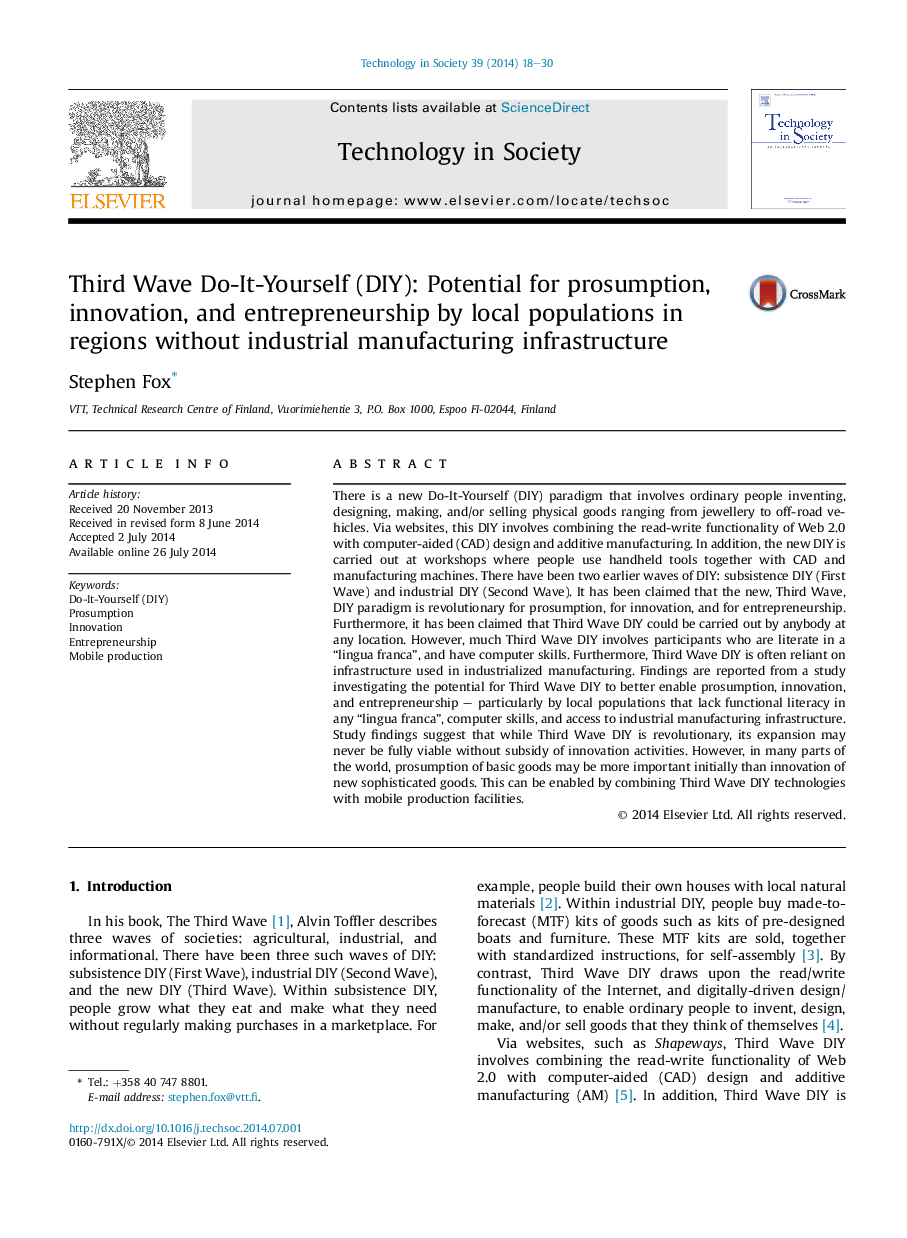| Article ID | Journal | Published Year | Pages | File Type |
|---|---|---|---|---|
| 375176 | Technology in Society | 2014 | 13 Pages |
•Third Wave DIY enables ordinary people to make a wide range of goods.•Third Wave DIY encompasses innovation and entrepreneurship, as well as prosumption.•Unlike industrial manufacturing infrastructure, Third Wave DIY is not viable without subsidy.•Third Wave DIY is feasible and viable within industrial manufacturing infrastructure.•Far from industrial manufacturing infrastructure, it is not fully viable without subsidy.
There is a new Do-It-Yourself (DIY) paradigm that involves ordinary people inventing, designing, making, and/or selling physical goods ranging from jewellery to off-road vehicles. Via websites, this DIY involves combining the read-write functionality of Web 2.0 with computer-aided (CAD) design and additive manufacturing. In addition, the new DIY is carried out at workshops where people use handheld tools together with CAD and manufacturing machines. There have been two earlier waves of DIY: subsistence DIY (First Wave) and industrial DIY (Second Wave). It has been claimed that the new, Third Wave, DIY paradigm is revolutionary for prosumption, for innovation, and for entrepreneurship. Furthermore, it has been claimed that Third Wave DIY could be carried out by anybody at any location. However, much Third Wave DIY involves participants who are literate in a “lingua franca”, and have computer skills. Furthermore, Third Wave DIY is often reliant on infrastructure used in industrialized manufacturing. Findings are reported from a study investigating the potential for Third Wave DIY to better enable prosumption, innovation, and entrepreneurship – particularly by local populations that lack functional literacy in any “lingua franca”, computer skills, and access to industrial manufacturing infrastructure. Study findings suggest that while Third Wave DIY is revolutionary, its expansion may never be fully viable without subsidy of innovation activities. However, in many parts of the world, prosumption of basic goods may be more important initially than innovation of new sophisticated goods. This can be enabled by combining Third Wave DIY technologies with mobile production facilities.
